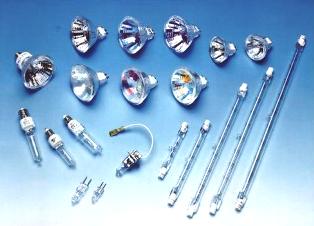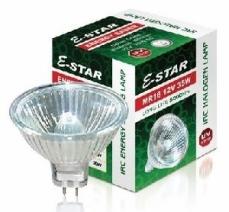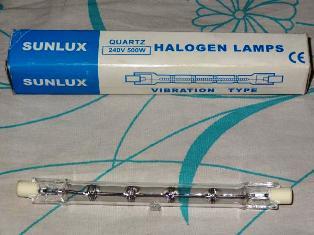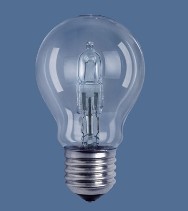Categories: Featured Articles » Sources of light
Number of views: 346756
Comments on the article: 16
Types of halogen lamps and their features
 Of all modern light sources halogen lamps have the highest quality color rendering. In addition, halogen lamps are characterized by high brightness and directional radiation. Them of course, only conditionally can be called energy-saving, nevertheless, in comparison with incandescent lamps they have several times greater light output and doubled service life.
Of all modern light sources halogen lamps have the highest quality color rendering. In addition, halogen lamps are characterized by high brightness and directional radiation. Them of course, only conditionally can be called energy-saving, nevertheless, in comparison with incandescent lamps they have several times greater light output and doubled service life.
There are so many different halogen lamps. In this article we will get acquainted with their main types and features.
All halogen lamps conditionally divided into two large groups: low-voltage lamps (low-voltage) - up to 24 V and mains lamps - 220 V. In addition, halogen lamps differ in design and purpose.

The main types of halogen lamps:
1. Linear halogen lamps
This is the oldest type of halogen lamp that was created back in the 60s of the last century. The lamps are a quartz tube with leads on both sides. The filament is supported in the lamp using special wire brackets.
Lamps with their small sizes have a very decent power - 1 - 20 kW. Indoors, such lamps are not used because of the very high brightness and high power consumption. Their main area of application is floodlighting. There are modern linear halogen floodlights that are used not only in outdoor, but also in indoor lighting. These lamps are characterized by increased impact resistance.
Linear halogen lamp
Lamps are available in standard lengths. The most popular halogen linear lamps are 78 and 118 mm long. Most linear halogen lamps require mandatory horizontal placement in space. Modern linear halogen lamps are available as double-ended with R7s socket (located on both sides of the lamp).
2. Halogen lamps with an external bulb
These are halogen mains voltage lamps. They are intended for direct replacement of incandescent lamps. Lamps with an external glass bulb are available with standard socles E14 and E27 (Edison's base). For such lamps special lamps are not required.
Inside the glass bulb there is a miniature or linear halogen lamp at a voltage of 220 V. The external bulb of such lamps protects the inner quartz bulb of the halogen lamp from contamination and accidental contact. In shape and size, it looks like a bulb of ordinary incandescent bulbs.
Halogen bulb with external bulb
Halogen lamps of this type come in different shapes and with different types of flasks - transparent, dairy and frosted. There are lamps with glass that absorbs ultraviolet radiation. Compared to conventional incandescent lamps, network voltage halogen lamps give light with a higher color temperature (2900 - 3000 K) and have better color reproduction.
Most halogen lamps of this type are more compact in comparison with incandescent lamps, so they can be used in small miniature lamps. Decorative halogen lamps of mains voltage (candle-shaped, hexagonal) are available, which can be used instead of decorative incandescent lamps.
OSRAM halogen bulb
Halogen lamps with an external glass bulb are connected to the mains without a transformer. Since the service life of halogen lamps depends very much on the parameters of the supply voltage, it is very advisable to connect halogen lamps of the mains voltage through a special device - halogen lamp protection unit. This protection unit ensures smooth start-up of halogen lamps without inrush current at the moment of start-up and protects the lamps in case of voltage deviation.
3. Halogen lamps with reflector (halogen directional light).
Such lamps are available in standard sizes - MR8, MR11 and MR16. The most popular size of halogen lamps is MR16 (bulb diameter 50 mm). Halogen lamps with reflectors are characterized by different angles of radiation.
The lamp consists of a miniature bulb with a special reflector (reflector). Reflectors redistribute the luminous flux of the lamp in space. The halogen lamp itself is located in the center of the reflector. There are many varieties of reflectors. Most common halogen lamps with aluminum reflectors.
Since halogen lamps are a modern kind of incandescent lamps, they emit a large amount of heat during operation. Lamps with aluminum reflectors direct heat forward. For cases where this is unacceptable, there are halogen lamps with interference reflectors (special translucent coating) in which heat is removed back.
Halogen lamp with aluminum reflector
Coated halogen lamps that reflect infrared (IRC halogen lamps) Lamps of the latter type are considered the most economical, since the bulb of such a lamp with the help of a special coating does not pass the infrared radiation of the glow body, but reflects it back onto the spiral. As a result, the temperature of the spiral increases. At the same time, heat losses are reduced, energy consumption is reduced and the service life is doubled compared to conventional halogen lamps.

IRC halogen lamp
There are halogen lamps without protective glass, with protective transparent glass, a glass cap and lamps with protective colored glass. Lamps without a protective glass and a glass cap should be used in closed luminaires. The glass of most modern halogen lamps does not transmit ultraviolet radiation.
Halogen lamps with a lamp reflector are usually used in the organization of point directional lighting. Usually they are built into suspended and suspended ceilings, and having correctly calculated the number of lamps, they can be used not only for lighting purposes, but also for organizing general lighting.
The bases of halogen lamps with reflectors have two-pin connectors: GY4, GZ4, GU4, GX5,3, GU5,3, GY6,35 - for low-voltage halogen lamps (6, 12 or 24 V). The number after the letters means the distance between the pins in millimeters.
Such lamps provide high electrical safety. They must be connected via a special electronic or electromagnetic transformer. Electronic transformers for halogen lamps are used much more often.
Halogen mains voltage lamps of size MR16 are available with two-pin sockets - G9 and G10. This is done so that they can not be accidentally confused with low-voltage halogen lamps.
4. Capsule (finger) halogen lamps
Such lamps have very miniature sizes and are a small capsule with leads. They are available with transverse and longitudinal glow bodies. Such lamps can be used in open luminaires without protective glasses. They are mainly used for fixtures built into furniture and ceiling, for decorative lighting. There are models of general lighting fixtures with capsular halogen lamps.
Halogen capsule lamp
Possible caps for capsule lamps: G4, G5.3, GY 6.35. Capsule halogen mains voltage lamps usually have a G9 cap (pin spacing 9 mm). They are used for decorative lighting, and sometimes in lamps for general lighting.

OSRAM capsule IRC halogen lamps
This article describes only the main types of halogen lamps. Of course, manufacturers of light sources do not stand still and every year they improve the produced halogen lamps, as well as create their new varieties, which is confirmed by the constant updating of their range in the catalogs. If you have encountered unusual types of halogen lamps, then share your impressions of their use in the comments. Waiting for your comments!
See also at bgv.electricianexp.com
:





